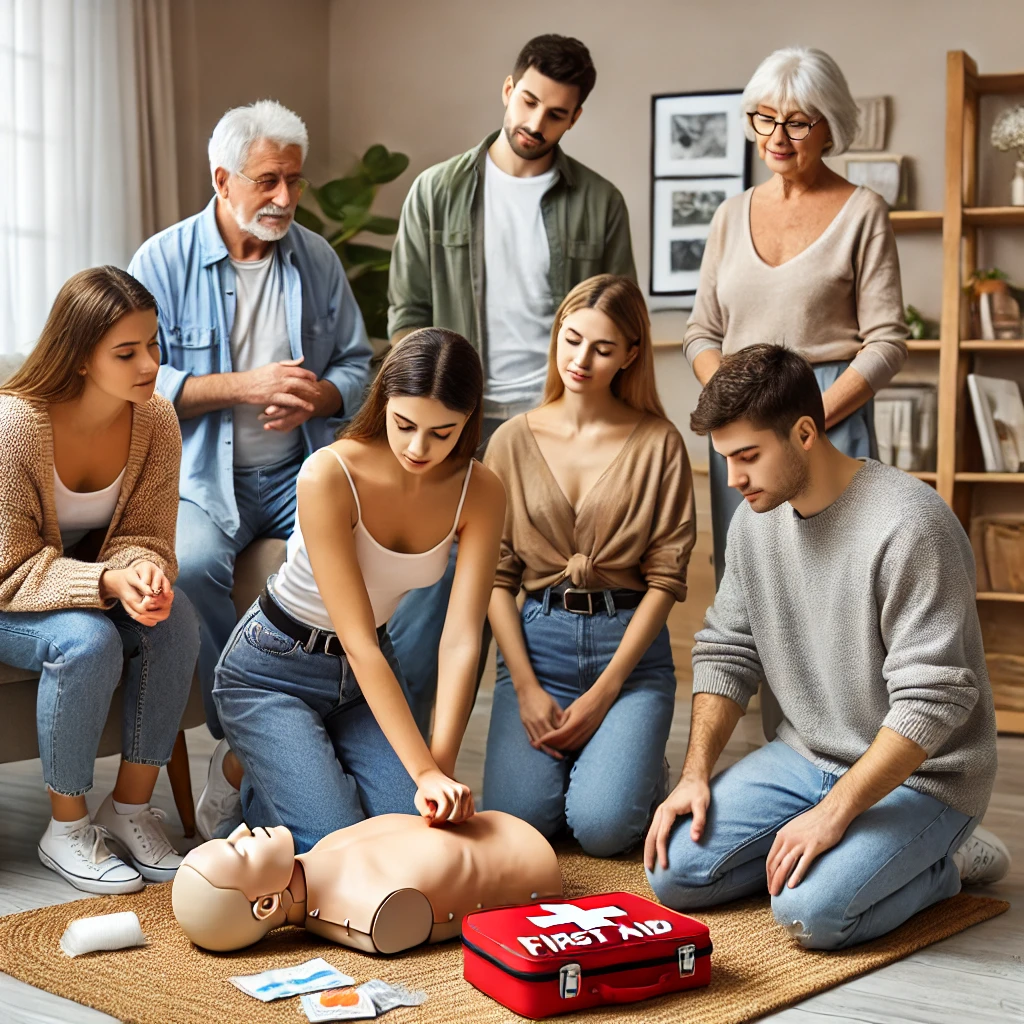Teaching first aid at home in the correct way

Certainly! Here’s a 700-word article on “Teaching First Aid at Home in the Correct Way.”
-Teaching First Aid at Home in the Correct Way
Learning first aid skills can be a lifesaver, and teaching these skills at home is an excellent way to prepare family members for emergencies. Teaching first aid correctly at home not only empowers individuals with the knowledge to handle injuries and health crises but also builds confidence, ensuring that each person knows what to do when quick action is necessary. Here’s a guide to teaching first aid at home effectively.
Understand the Basics of First Aid
Before teaching first aid, it’s important to understand the essential components and techniques. Basic first aid includes understanding how to address minor injuries like cuts, scrapes, and bruises, as well as more serious situations, such as burns, choking, fractures, and cardiac emergencies. Some of the most commonly taught first aid techniques include:
– CPR (Cardiopulmonary Resuscitatio A life-saving technique for cardiac arrest that involves chest compressions and rescue breathing.
– Bleeding Control : Steps to stop or slow bleeding, including applying pressure and using bandages.
– Choking Response: Techniques like the Heimlich maneuver to help someone who is choking.
– Burn Treatment: Proper care for minor burns and recognizing when medical help is needed.
– Fracture Support: Techniques for immobilizing an injury before seeking professional help.
Learning these skills through reliable sources, such as first aid organizations or certified instructors, is essential to ensure accuracy.
Gather Necessary Supplies
Creating a well-stocked first aid kit is a fundamental step. First aid kits should include items like adhesive bandages, antiseptic wipes, sterile gauze pads, adhesive tape, scissors, tweezers, instant cold packs, disposable gloves, and an emergency blanket. Having these supplies ready at home allows you to demonstrate each technique hands-on, which makes learning more effective. For example, showing how to use a bandage or apply a cold pack can help children and adults understand proper application methods.
Start with Age-Appropriate Lessons
When teaching children first aid, it’s crucial to use age-appropriate language and techniques. For young children, focus on simple steps like calling for help, recognizing an emergency, and understanding how to use basic items like bandages. Older children, teenagers, and adults can handle more complex tasks like CPR or wound dressing. Remember that the goal is to build confidence in each family member’s ability to help, no matter their age.
Demonstrate Hands-On Techniques
First aid is a skill-based subject, so practical demonstration and hands-on practice are critical. Rather than simply explaining how to perform CPR or bandage a wound, demonstrate each action step-by-step. Encourage each family member to practice as well. For instance, use a CPR training manikin if possible or a stuffed animal to simulate chest compressions. Practicing with real or imitation supplies will allow each person to feel more comfortable handling these items in real situations.
Scenario-based learning is an effective way to teach first aid skills. Create hypothetical situations, such as a fall, a cut, or a burn, and walk family members through the steps they would take to handle each incident. This method encourages critical thinking and decision-making, which are essential in emergencies. For example, simulate a situation where someone has a nosebleed, and guide family members on the proper steps to treat it, such as tilting the head slightly forward and applying gentle pressure to the nose.
Teach the Importance of Staying Calm
An essential aspect of first aid that is often overlooked is the importance of staying calm. In an emergency, panic can lead to mistakes and make it difficult to think clearly. Teaching family members to take a few deep breaths, assess the situation, and then act helps to instill a sense of control. Remind them that they don’t need to rush and that doing things step-by-step is more effective. Staying calm can also be reassuring for the injured person, helping them to feel safer.
Reinforce the “Check, Call, Care” Principle
The “Check, Call, Care” principle is a straightforward guideline that can help people remember the first steps in an emergency. Teach family members to:
– Call** for professional help, such as dialing emergency services if necessary.
– Cara by providing basic first aid while waiting for help to arrive.
This three-step process can prevent confusion in high-stress situations and ensures that everyone takes the correct actions.
Encourage Regular Practice and Refreshers
Like any skill, first aid requires regular practice to maintain proficiency. Schedule periodic review sessions to reinforce techniques and update family members on any new information or changes in procedures. Revisiting skills every few months can help prevent skills from being forgotten. Using resources like first aid apps or online videos can be helpful as well, allowing family members to stay updated.
Know When to Seek Professional Help
Finally, it’s important for everyone to recognize when professional medical help is necessary. Not all injuries can be managed with basic first aid, and knowing when to call for help is essential. Teach family members the signs of severe injuries, such as heavy bleeding, loss of consciousness, or difficulty breathing, and emphasize the importance of acting quickly in these cases.
Teaching first aid at home equips family members with essential life-saving skills that foster confidence, resilience, and preparedness. By understanding the basics, practicing hands-on skills, and incorporating real-life scenarios, anyone can feel empowered to act when it matters most. With regular practice and a calm approach, first aid knowledge becomes a powerful tool for safety at home and beyond.
https://youtu.be/-qUv82oXkOg?si=wNesQBnz_TurlaI6








